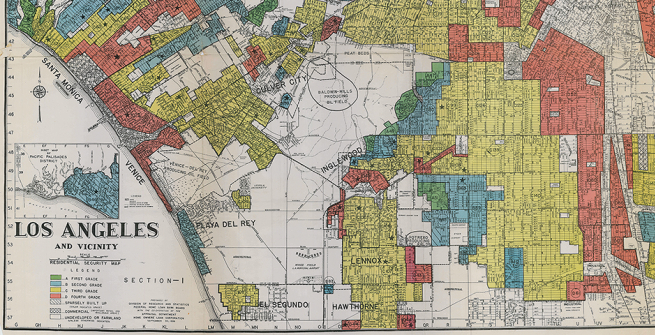“Today I sketched the preliminary plans for a large country house which will be erected in one of the most beautiful residential districts in the world... Sometimes I have dreamed of living there. I could afford such a home. But this evening...I returned to my own small, inexpensive home...in a comparatively undesirable section of Los Angeles. Dreams cannot alter facts; I know...I must always live in that locality, or in another like it, because...I am a Negro.”—From the Essay “I am a Negro” by Paul Revere Williams, published in American Magazine July 1937
Paul Revere Williams is one of the most celebrated architects Los Angeles has ever produced, a talent who refused the limitations a racist infrastructure would try and place on him. His determination and vision created the California dream that Hollywood would export around the world. His designs emote a simple elegance, a comfort set in a dreamscape of historical notes. In spite of his talent and determination, Williams was forbidden to live in many of the neighborhoods where he designed homes because of racially restrictive covenants—contracts placed in the deeds of homes by white property owners or developers that barred purchasers from selling or renting to ethnic and religious minorities.
The practice of redlining seen on these maps was born out of the National Housing Act of 1934, where the FHA commissioned the Home Owners Loan Corporation to create a survey of neighborhoods in 239 cities and rank them by security and desirability. The survey ranked neighborhoods with a grade rating, from A to D, and color-coded each grade. An A-rated neighborhood was coded green and deemed the most “desirable,” a D neighborhood was coded red and deemed “least desirable” and therefore a higher loan risk. This was a practice that mirrored the practice of restrictive land covenants, which made it impossible for a person of color to live in a green zone or get an FHA backed loan in a red area.
The use of land covenants as a legal tool, to restrict people solely based on their race, religion, or national origin, in California, goes back to a federal court ruling in the case of Lee Sing, who sued the city of Ventura in 1892, for trying to restrict people of Chinese origin from residing within the city’s jurisdiction. The federal courts sided with Mr. Sing, ruling that state and municipal governments could not discriminate but allowed individuals the ability to discriminate when entering into residential contracts. This court ruling laid the groundwork for racially restrictive land covenants, which resulted in the first racially motivated covenant being filed in Los Angeles in 1902, barring all non-white people in the purchase of a particular piece of property. These were clauses added to property deeds, saying who or who could not own or reside on the property. The Los Angeles Realty Board went on a campaign to attach racially restrictive land covenants on as many new developments as possible, after its founding in 1903. These clauses were so maliciously thought out and written, that a property which had been sold and resold several times could revert to the original deed holder if the covenant was ever breached. This was the reality in Los Angeles at that time and highlights the extraordinary courage Paul R. Williams had to exercise to excel and overcome while following his dream and his art.
If you compare the “redlining map” to the home locations of Eddie “Rochester” Anderson, and Bill “Bojangles” Robinson, you will notice they were built in the red district, which was considered 4th grade in desirability. Both of these actors had the means to live in the same neighborhoods as their Hollywood peers. This comparison reflects the comments of Paul R. Williams above, it wasn’t until two Supreme Court rulings, in 1948 and 1953, that these covenants were declared unconstitutional. After these societal roadblocks were struck down, affluent African-Americans like Paul R. Williams could build their homes in places, previously denied to them, like Lafayette Square, where Williams built his home in 1952.
Paul Revere Williams, a native Angeleno, lived these realities and refused to let them alter his dreams. He was born in a diverse neighborhood on Santee street in 1894, lost both his parents by the time he was four, and was raised by loving foster parents, who encouraged him. Despite such societal and institutional obstacles to his success bigotry, redlining, and racially-restrictive covenants, Paul R. Williams rose to every challenge he faced, never relenting to follow his dreams, and to become an architect who would dedicate his life to his work, his community, and the city he called home.
“When I look about me and see the magnificent strides which so many men and women of my race are making when I see the sacrifices they are undergoing in order to help other members of our race who deserve and need help, and when, remembering the burden of my own handicap, I realize the burden of theirs, it seems to me that the race problem is one of solution, indeed.” —From the Essay “I am a Negro” Paul Revere Williams, published in American Magazine July 1937. [Republished in Ebony Magazine, November 1986]
A highlight of Paul Revere Williams’ work and influence around Los Angeles and Southern California can be seen on the Tessa online exhibition with an interactive map showing the sphere and reach of his works.













